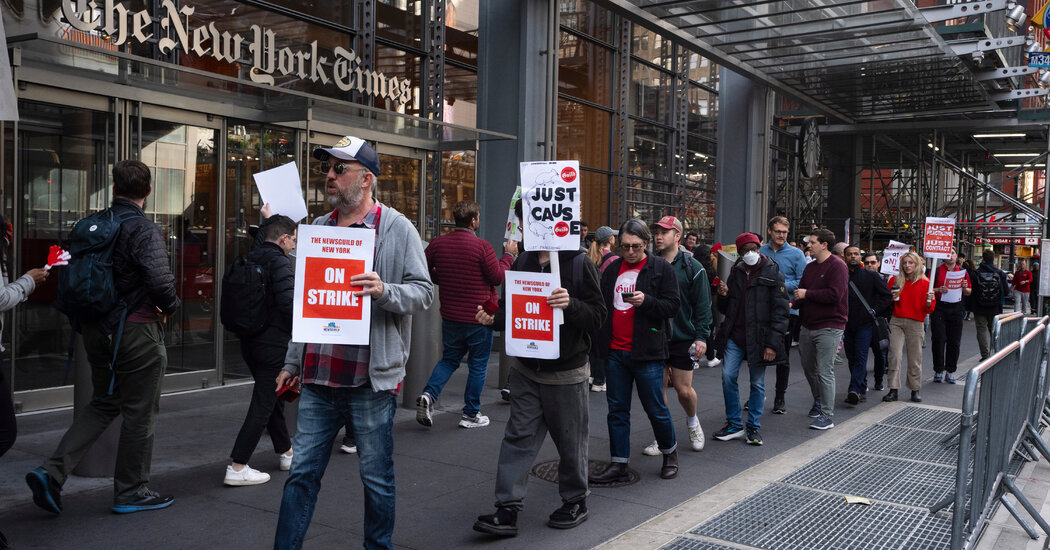New York Times Tech Workers on Strike
In a world where the news shapes our reality, what happens when the storytellers decide to take a stand? This week, tech workers at The New York Times have ignited a firestorm of conversation by going on strike, sending ripples through an industry that thrives on innovation and information.
As these digital warriors rally for their rights and demand better working conditions, they’re not just fighting for themselves—they’re challenging the very foundation of how we consume news in the digital age.
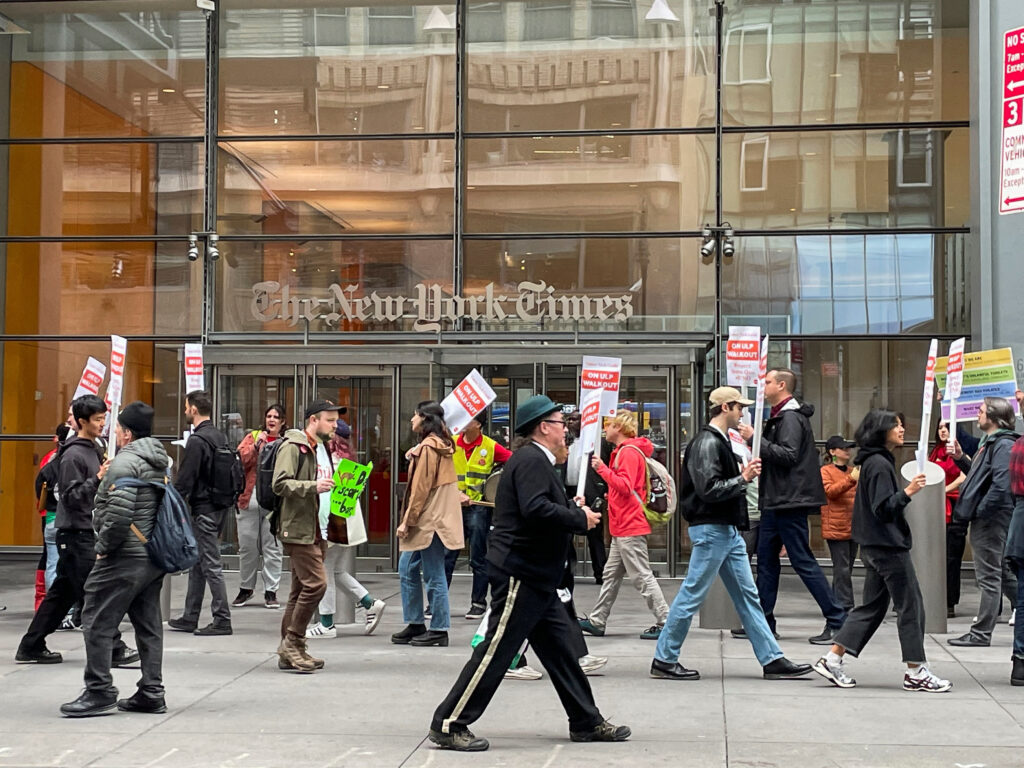
Join us as we dive into this pivotal moment in media history and explore why this strike is more than just a labor dispute; it’s a crucial turning point that could redefine the intersection of technology, journalism, and worker rights. Buckle up—this is one story you won’t want to miss!
Introduction to the Strike
The bustling streets of Manhattan have taken on a new rhythm as tech workers at the New York Times march for change. In an unprecedented move, these employees are asserting their rights in a strike that has captured national attention. As one of the most influential news organizations globally, the actions of its tech workers could ripple through the journalism landscape and beyond.
The New York Times is more than just a newspaper; it’s a beacon of information that shapes public opinion and discourse. When those behind its digital innovation raise their voices, it’s not just about paychecks—it’s a call to rethink workplace culture in media today. So why does this strike matter? Let’s delve into who these tech workers are and what they hope to achieve with their bold stand.
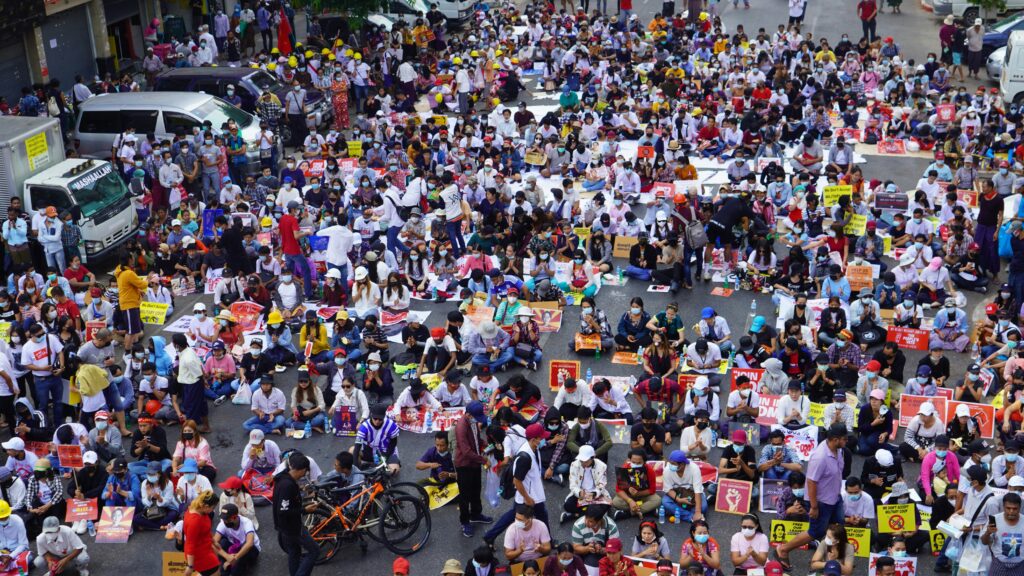
Brief overview of the situation
Tech workers at the New York Times have taken a bold stand by going on strike, drawing significant attention to their concerns. This unexpected move has sent ripples through the media landscape.
The protest stems from longstanding issues regarding fair compensation and workplace equity. Employees are raising alarms about pay disparities that persist within the tech division. These challenges mirror broader conversations happening across various industries.
With the New York Times being a pillar of journalism, this action carries weight beyond its headquarters in Manhattan. The outcome could influence how tech roles evolve in news organizations moving forward.
Strikes are often catalysts for change, and this situation is no different. All eyes are now on both sides as negotiations unfold against a backdrop of increasing public interest in labor rights within major corporations like NYT.
Importance of the New York Times as a news source
The New York Times stands as a cornerstone of journalism in the United States. With its rich history dating back to 1851, it has shaped public discourse and informed generations.
Its investigative reporting often uncovers hidden truths, influencing policy and public opinion. The paper’s commitment to fact-checking sets a high standard for media integrity amid rampant misinformation.
As digital platforms evolve, the NYT adapts while maintaining its journalistic values. It not only covers major global events but also dives into local stories that matter most to communities.
Moreover, the New York Times serves as an essential resource for understanding complex issues—from politics to culture—ensuring readers are well-informed citizens. Its influence extends beyond news; it sparks conversations that resonate across various sectors of society.
Background on Tech Workers at the New York Times
Tech workers at the New York Times play a crucial role in shaping the company’s digital presence. They are responsible for maintaining and developing the platforms that deliver news to millions worldwide.
These professionals include software engineers, data analysts, and UX designers. Each contributes unique skills essential for navigating today’s fast-paced media landscape.
Historically, tech employees have faced various challenges within the organization. Previous labor disputes highlighted issues around job security and workplace culture. Concerns about inclusivity have also been raised, particularly regarding hiring practices.
As technology evolves, so does pressure on these workers to adapt quickly while managing heavy workloads. Their experiences reflect broader trends in the industry concerning employee expectations and corporate accountability. The atmosphere is charged with anticipation as they advocate for better conditions that resonate beyond their own workspace.
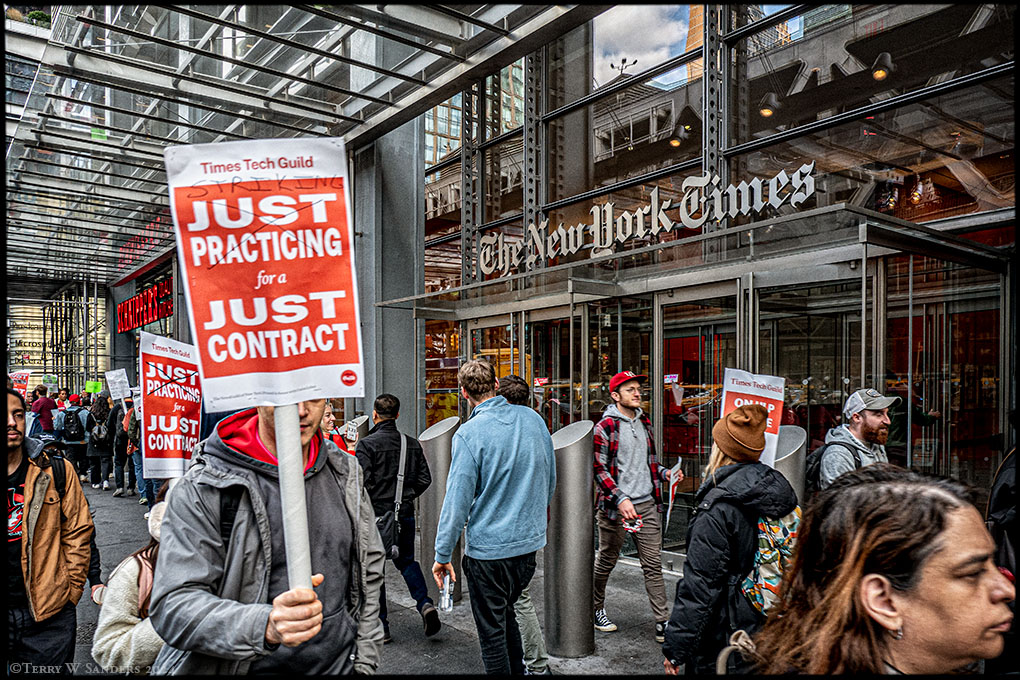
Who they are and their role in the company
The tech workers at the New York Times are a diverse group of professionals. They include software engineers, data analysts, and UX designers. Each plays a vital role in shaping the digital experience for millions of readers.
These employees work tirelessly behind the scenes to ensure that news reaches audiences effectively. Their expertise helps optimize the website and mobile applications. They also maintain security protocols to protect user data.
In addition to technical skills, they contribute innovative ideas that enhance content delivery. The team collaborates closely with reporters and editors, ensuring stories are presented engagingly across platforms.
Despite their critical contributions, these workers often feel undervalued within the organization. Issues like pay disparities create tension as they strive for fair representation in a high-profile company known for its journalism excellence.
Previous labor disputes and issues faced by tech workers
The tech workers at the New York Times have a history that reflects broader struggles within the industry. Previous labor disputes often stemmed from issues such as job security and equitable treatment across departments.
In recent years, employees faced challenges like project management frustrations and inadequate resources. These factors contributed to high turnover rates, making it difficult for teams to maintain continuity.
Moreover, there have been concerns about limited career advancement opportunities. Many felt stuck in their positions without clear pathways for growth or promotion.
These ongoing grievances laid the groundwork for today’s strike. Workers are seeking not just fair pay but also a workplace culture that values diversity and inclusion—elements they believe are crucial for innovation in journalism technology.
Reasons for the Strike
The strike at the New York Times is fueled by critical issues that resonate deeply with tech workers. One major concern is pay disparity. Many employees feel their compensation does not reflect their contributions or align with industry standards.
Additionally, hiring practices have come under scrutiny. A lack of diversity in recruitment has left many feeling excluded from opportunities within the company. This oversight affects workplace culture and innovation.
Working conditions also play a significant role in this movement. Tech workers often report high stress levels due to demanding workloads and insufficient support systems. Such environments can stifle creativity and lead to burnout.
These factors combined create an urgent need for change, making it clear why the strike matters not just for those involved but for the broader media landscape as well.
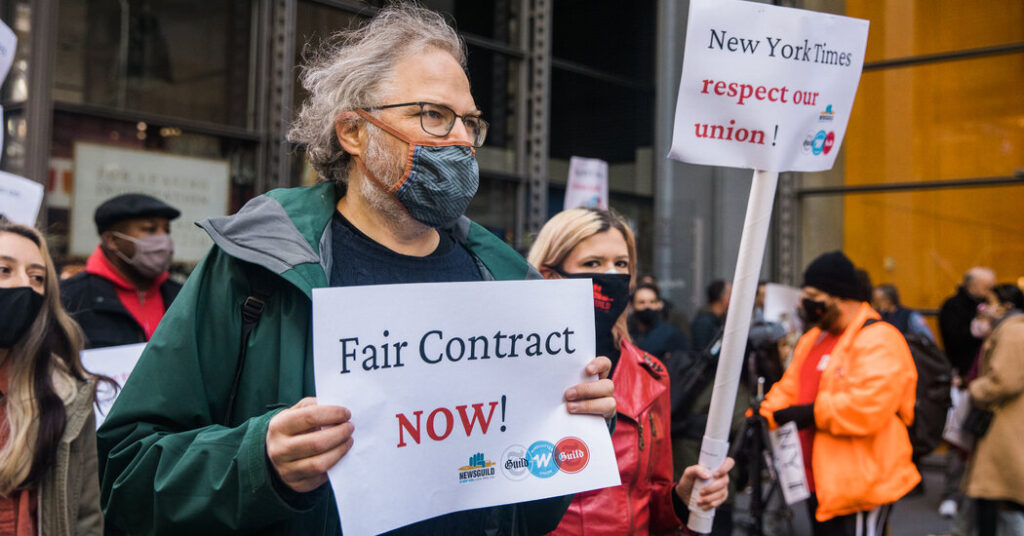
– Pay disparities and lack of diversity in hiring practices
Pay disparities have long plagued the tech sector, and the New York Times is no exception. Many workers feel undervalued compared to their counterparts in similar roles at other companies. This discrepancy creates frustration and a sense of inequity among employees.
Moreover, hiring practices at the New York Times are under scrutiny for lacking diversity. The tech workforce reflects broader industry trends where certain demographics dominate while others remain marginalized.
This lack of representation not only affects workplace culture but also impacts innovation and creativity within teams. A diverse team can drive better problem-solving and richer ideas, enhancing product development.
Workers want change; they seek equitable pay structures that reflect their skill sets alongside an inclusive environment that truly represents society’s fabric. Addressing these issues isn’t just about fairness—it’s essential for fostering a thriving workplace where everyone feels empowered to contribute.
Working conditions and stress levels
Tech workers at the New York Times are voicing concerns about their working conditions. Long hours and high-pressure projects have become the norm. Many report feeling overwhelmed, leading to burnout.
The fast-paced environment is often stressful. Tight deadlines can create a sense of urgency that leaves little room for creativity or innovation. Workers struggle to maintain a healthy work-life balance amid these demands.
Moreover, inadequate resources contribute to this tension. Teams may find themselves understaffed, forcing individuals to take on multiple roles without sufficient support.
As mental health awareness grows, it’s clear that sustainable practices are essential in tech workplaces. The current situation raises questions about the future of employee well-being at major institutions like the New York Times headquarters.
Addressing these issues could reshape not only internal dynamics but also set a precedent across the media industry.
Impact on Journalism and Media Industry
The strike at the New York Times could be a turning point for journalism and the media landscape. As tech workers demand better conditions, their actions echo across the industry, highlighting long-standing issues that many organizations face.
Increased attention to worker rights may encourage other media outlets to reassess their own practices. The ripple effects can lead to improved working environments not just at the NYT but throughout journalism as a whole.
Moreover, this strike shines a light on diversity and inclusion in hiring—an area that desperately needs reform. A more diverse workforce can enrich storytelling and reporting, ultimately enhancing credibility and trust with readers.
As tech workers advocate for change, they remind us that behind every headline is a team struggling for fair treatment. This moment underscores how vital it is to support those who create our news narratives.
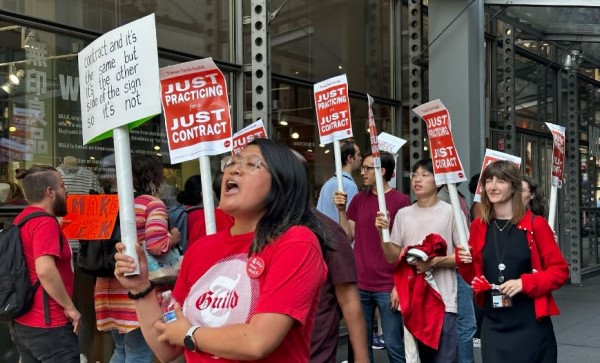
Discussion on how this strike could bring about change in the industry
The strike by tech workers at the New York Times has sparked conversations across the media landscape. As one of the most influential news organizations, its actions resonate far beyond its headquarters.
This moment highlights systemic issues within the journalism and technology sectors. If successful, it could set a precedent for other companies to reevaluate their labor practices.
A collective voice from tech employees urges better working conditions and equitable pay structures. Their fight exemplifies a growing demand for transparency in hiring practices, especially regarding diversity.
As more professionals align with these values, change might ripple through industry norms. The strike serves as a powerful reminder that when workers unite, they can challenge long-standing disparities and push for reform.
Such movements may inspire solidarity among various media outlets facing similar challenges. This shift could redefine what it means to work in journalism today.
Support for the Strike
Support for the strike has poured in from various corners of the media landscape. Colleagues at other news organizations have expressed solidarity, recognizing that this fight is about more than just one company.
Many journalists see this as a pivotal moment for tech workers across the industry. They understand that fair treatment and equitable pay are essential to maintaining a healthy workplace culture.
Social media platforms have been buzzing with hashtags and messages advocating for NYT tech employees. This grassroots support highlights a growing movement focused on justice in journalism.
Organizations dedicated to labor rights have also chimed in, emphasizing the importance of collective action. Their backing adds weight to an already significant cause.
As pressure mounts on management, it’s clear that many believe change is overdue within these prestigious walls. The eyes of both supporters and critics are firmly fixed on how this situation unfolds.

Voices from other media companies and organizations showing solidarity with NYT tech workers
Across the media landscape, solidarity for New York Times tech workers is growing. Other organizations are stepping up to show their support in meaningful ways.
Union leaders from various outlets have voiced their backing through social media campaigns and public statements. They highlight that fair treatment of tech employees ensures a healthier work culture across the industry.
Notably, some journalists at competing publications have penned articles advocating for better working conditions. Their messages resonate with readers who understand the significance of equity within journalism.
Even non-media organizations echo this sentiment, emphasizing the need for diversity and fairness in all workplaces. The call for change is clear: when one group stands up, it inspires others to follow suit.
This collective support strengthens calls for reform and amplifies awareness around labor rights in journalism today.
Response from The New York Times Company
The New York Times Company has acknowledged the strike initiated by its tech workers. In a recent statement, they emphasized their commitment to open dialogue with employees.
While expressing disappointment over the labor action, they also highlighted ongoing efforts to address concerns regarding pay and workplace conditions. The company insists that maintaining a collaborative environment is essential for progress.
Furthermore, management mentioned current initiatives aimed at improving diversity in hiring practices. They stressed that these steps are crucial for fostering an inclusive culture within their teams.
Despite this response, many tech workers remain unsatisfied with the pace of change. They emphasize urgency in resolving issues related to disparities and stress levels in the workplace. As discussions unfold, eyes are on how effectively leadership will respond moving forward.

Official statement or comments from
The leadership at The New York Times has acknowledged the ongoing strike, emphasizing their commitment to addressing the concerns raised by tech workers. They expressed a desire for open dialogue and have indicated that they are reviewing pay structures and diversity initiatives within their workforce.
Despite this response, many employees remain skeptical about whether these discussions will lead to substantial change. Statements from union representatives highlight the urgency of resolving issues related to pay disparities and working conditions before any real progress can be made.
As this situation develops, it will be crucial to watch how both sides navigate negotiations. This strike not only impacts those directly involved but also sheds light on broader systemic issues in journalism and technology at large. With media companies closely observing the outcome, there could be significant implications for labor relations across similar industries moving forward.

